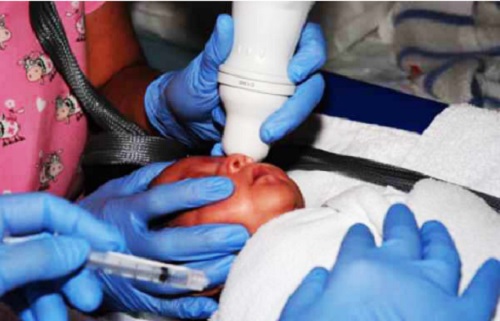Blinding disease affecting premature babies


Lack of information and screening affects Retinopathy of Prematurity treatment
Mbale, Uganda | PATRICIA AKANKWATSA | Retinopathy of Prematurity (ROP), a potentially blinding eye disease affecting premature infants, remains a significant healthcare challenge in Uganda.
ROP occurs when abnormal blood vessels develop in the retina, the light-sensitive tissue at the back of the eye. These vessels can severely scar the retina, leading to visual impairment or blindness. Premature infants, particularly those born very early or with low birth weight, are at increased risk of developing ROP.
Globally, over 184,700 preterm infants developed ROP in 2010, and more than 50,000 experienced vision-threatening complications. It’s a leading cause of infant blindness.
ROP is preventable and treatable with timely screening and intervention. However, in Uganda, especially in rural areas, a significant gap in ROP screening services persists, putting vulnerable new-borns at risk of permanent vision loss.
Dr Martha Muduwa a clinical trial co-ordinator in the Neonatal Unit at Mbale Referral Hospital says that the predisposing factors for retinopathy of prematurity and its associated complications include low birth weight of less than 1.5 kg, gestational age of less than 32 weeks, hyperoxia, sepsis, blood transfusions, respiratory distress, multiple pregnancies, and mechanical ventilation.
She adds that ROP has no specific signs and symptoms and, in many cases, it resolves naturally without requiring treatment, and affected infants develop normal vision.
“The condition can however progress to a more severe form, threatening the baby’s sight. Prompt intervention is necessary to prevent permanent retinal damage and subsequent vision loss. This is why healthcare providers recommend regular eye examinations for infants at risk of ROP.”
The World Health Organisation (WHO) guidelines advise that all preterm infants at risk of retinopathy of prematurity undergo a fundus examination by a qualified observer 4-7 weeks post-birth. Despite this recommendation, the implementation of ROP screening programs in low-middle-income country settings, such as Uganda, remains limited due to the scarcity of neonatal intensive care units. Currently, Uganda lacks a national ROP screening guideline and specific research on the condition.
To address this gap, Born on the Edge, a non-profit organisation that focuses on improving neonatal care; especially for preterm babies, set up a fundraiser to raise funds for screening programmes as well as raising awareness about ROP.
This happened on World Prematurity Day in Mbale on November 17th.
Dr Mudawa says that some of the challenges in addressing retinopathy of prematurity (ROP) in Uganda include a lack of awareness among healthcare workers, parents, and policymakers regarding the condition, its potential for severe visual impairment, and the importance of regular nationwide screening programmes.
“This is why we organised this fundraiser where we involved the community and health workers whom we taught about ROP and how they can prevent and treat it.”
“ROP is not talked about yet it is very important.”
She added that the availability of affordable treatment for vision-threatening ROP remains a significant obstacle.
“The economic strain on most families hinders screening and later on treatment. There are only two hospitals in Uganda that do ROP screening and are not easily accessible.”
Dr Sabrina Kitaka, senior lecturer and Honorary Senior Consultant of Paediatrics and Adolescent Medicine at Makerere University College of Health Sciences says that it is important to get your baby treated as soon as ROP manifests.
According to Dr Kitaka, there are 2 main treatment options which include; injections; a medication that slows blood vessel growth is often the best treatment for ROP. This injection can be done at your child’s hospital bed. This therapy is very effective and isn’t painful. And because it’s so safe and works so well, most doctors prefer this choice. But if your child’s ROP is more advanced or doesn’t respond to injections, surgery is another option.
The second is laser surgery which is used in severe cases. Laser surgery can help very advanced cases of ROP.
“By placing tiny laser marks along the side of the eye’s retina, we’re able to prevent the retina from pulling away,” says Kitaka, “Though a baby’s eyes may be red and puffy for a couple of days, they won’t have much pain.”
She advises that if a baby is diagnosed with ROP in the Neonatal Intensive Care Unit (NICU), follow-up care is needed even if the baby doesn’t need treatment.
“You’ll have an appointment with the eye doctor again a few months after your baby leaves the hospital adding that; any stage of ROP may make a baby more likely to have near-sightedness, lazy eye, and crossed eyes in the future.”
While Uganda experiences a preterm birth rate of 13.6 per 1000 live births annually, data on ROP prevalence and a formal screening program are currently absent.
The post Blinding disease affecting premature babies appeared first on The Independent Uganda:.





